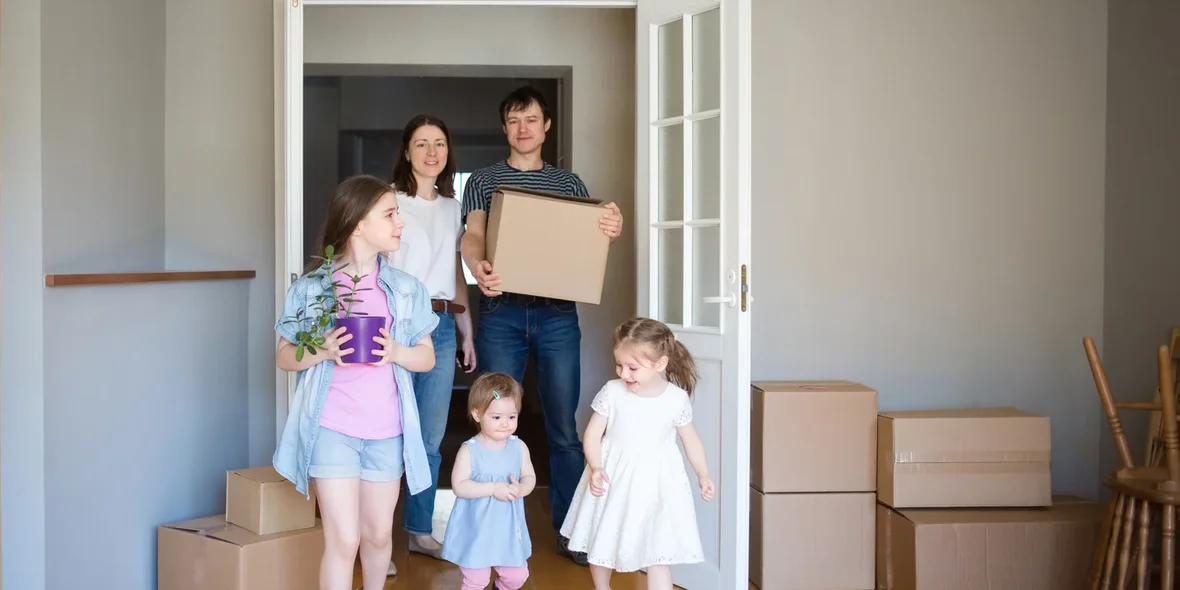
More space—more children? Expert on how the number of square meters affects the birth rate
Is reducing square meters in apartments bad for the birth rate? There are studies on this topic, and the issue is discussed at the state level in many countries. For example, in South Korea, back in 2017, a report was published stating that marriage rates and birth rates inevitably decline in the country when people can't afford decent housing. In other words, couples tend to postpone having children when the cost of housing becomes too high or the housing area is too small. Konstantin Zlobin, Development Director at Asterra, shared his thoughts on this topic with us.
“Older people today constitute the fastest-growing age group in the world.”
— How can you describe the current demographic situation around the world? Which countries are doing better, and which are doing worse?
 — Demographic experts say that many countries are experiencing a demographic crisis. Over the past four years, we have faced challenges that have undoubtedly had a significant impact on the deterioration of the demographic situation around the world.
— Demographic experts say that many countries are experiencing a demographic crisis. Over the past four years, we have faced challenges that have undoubtedly had a significant impact on the deterioration of the demographic situation around the world.
However, despite the declining birth rate, the UN predicts that the world's population will increase in the future. At the same time, the number of children under the age of 5 will be inferior to the number of people aged 65 and older. Today, the elderly make up the fastest-growing age group in the world.
African populations are likely to double, while Europe's population is likely to decline. Experts also predict that population growth in the next 30 years will be brought to us by countries such as India, Nigeria, Pakistan, Ethiopia, Tanzania, Indonesia, Egypt, and the United States.
I will note here that if we take the Middle East, Asia, and Africa, there is no question about the impact of “square meters” on the birth rate; this indicator is influenced by cultural and religious aspects. Culture and geography, in general, have a much greater impact on fertility than square meters.
“One in five couples who took out a mortgage had a child in the last three years.”
— What is a demographic hole, and how does housing construction affect its formation?
— By “demographic hole,” experts understand a significant difference in the number of any particular generation between younger and older people. Frankly speaking, I have not come across any studies on the impact of housing construction on the formation of the demographic hole.
I should note that the cost of housing is regulated by the market, and the pricing process is influenced by the availability of preferential lending programs and the income level of the population. It is important to realize that this market is a “living mechanism” that can adjust to the current conditions and challenges of the time.
— Are there any examples of studies on how the reduction of square meters in apartments affects the birth rate? What main theses can be deduced from them?
— Yes, some studies prove that “square meters” influence the birth rate and increase in income.
Back in 2013, experts from VTB24 (since 2017 integrated into VTB) analyzed how consumer behavior is influenced by taking out a loan to purchase real estate. This was the first study of this kind. It turned out that 63% of the bank's mortgage borrowers have a significant increase in their salary, people are less likely to change their marital status, and a child is born in every fifth family.
Also, according to this study, the change in the marital status of borrowers after the mortgage is somewhat less frequent than for other customers. But these changes are rather positive. Thus, 12% of respondents got married after taking out a mortgage loan, while 5% of borrowers got divorced. Every fifth married couple who took out a mortgage has had a child in the last three years, and another 4% are expecting an addition in the coming months.
“Citizens' perception of comfortable housing has been very much changed by the pandemic.”
— What is individual housing construction, and why is it important to develop it?
— Individual housing construction, has become one of the most trendy areas, starting with the pandemic. Many city dwellers during this time revised their ideas about comfortable housing, which resulted in a trend to move from an apartment to their own home.
Priorities shifted as follows: firstly, there should be more “square meters” to be able to “rest from each other”, and secondly, there began a frenzied demand for suburban real estate and plots.
Banks, it must be said, were not left behind and quickly brought to the market preferential products corresponding to the demands of the population. Recently, the head of the analytical center “Dom.RF” compared the data on the number of families who took out a preferential mortgage (including family mortgages) with Rosstat data on the birth rate in the country for 2–3 years. The conclusion was as follows: the debt burden can strengthen the institution of the family; among mortgage borrowers, the birth rate in 2022 was two times higher than the national average.
Coming back to housing and housing development, it is useful to develop it, as living in suburban areas will undoubtedly have a good effect on demographics. It is easier to live and have children in your own house, which, as a rule, is bigger than an apartment. For this purpose, it is necessary to allocate land, build so-called one-story cities, give tax preferences to buyers, and so on.
I would also like to say that, yes, small housing is in trend now, but it sells because people choose it based on cost and the need to have their place, not on comfort. But one way or another, people will always strive to improve their living conditions, even if they start with 20 square meters. It is up to the individual to determine the psychologically comfortable meterage for himself or herself.
Author
I am responsible for editorial work. I write expert interviews and guides.




















